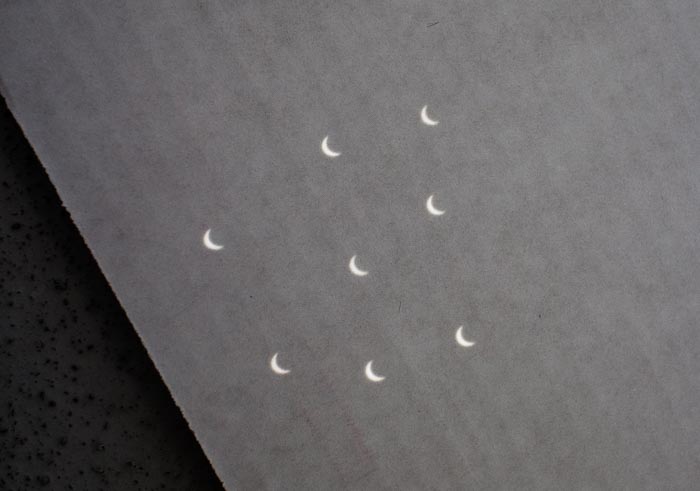(rerun inspired by the Eclipse)
In my post A Perfect Enemy, I mentioned Poul Anderson’s 1972 story A Chapter of Revelation. Godintending to demonstrate His existence to the world and thereby encourage people to prevent the global nuclear war which is about to occurstops the movement of the sun across the sky. (Technically, He does this by slowing earth’s rotation period to a value identical with Earth’s year.) The reaction to this event is confirmation bias on an immense scale: just about everyone draws the conclusion that the miracle proves that whatever beliefs they already held were the correct ones…for example, a Russian scientist (remember, this was written in 1972) suggests that “The requirement of minimum hypothesis practically forces us to assume that what happened resulted from the application of a technology centuries beyond ours. I find it easy to believe that an advanced civilization, capable of interstellar travel, sent a team to save mankind from the carnage threatened by an imperialism which that society outgrew long ago.” Moralists, militarists, extreme right-wing evangelists, Black Power advocates…all find in the miracle only proof of their own rightness, and the world slides into further chaos, with riots, coups d’etat, and cross-border military attacks.
Several weeks ago, I picked up Karen Thompson Walker’s novel The Age of Miracles, in which strange solar behavior also plays a leading part. Eleven-year-old Julia, focused in the usual challenges of growing up, is not too concerned when scientists announce thatfor some unknown reasonthe earth’s rotation has slowed very slightly and the days and nights are both getting a little longer. But the process, whatever it is, continues…the days and the nights get longer..and longer..and longer.
A very well-written book, IMO; especially impressive since it is the author’s first novel. Not everyone agrees: the Amazon reviews indicate that a lot of people liked it very much, and quite a few found it disappointing. But I thought it was very worthwhile; hard to put down, in fact.
Another coming-of-age story involving solar phenomena is Connie Willis’s Daisy, in the Sun. Like the protagonist of the previous book, Daisy is dealing with the problems of adolescenceoh, and by the way, the sun (which Daisy has always loved) is going to go nova and kill everyone on earth. It’s a strange story, difficult to summarize…I’ll just quote from the author’s introduction:
During the London Blitz, Edward R. Murrow was startled to see a fire engine racing past. It was the middle of the day, the sirens had not gone, and he hadn’t heard any bombers. He could not imagine where a fire engine would be going.
It came to him, after much thought, that it was going to an ordinary house fire, and that that seemed somehow impossible, as if all ordinary disasters should be suspended for the duration of this great Disaster that was facing London and commanding everybody’s attention. But of course houses caught fire and burned down for reasons that had nothing to do with the Blitz, and even in the face of Armageddon, there are still private armageddons to be faced.
The Poul Anderson story can be found in his short-story collection Dialogue With Darkness, and Daisy, in the Sun is in Fire Watch
.
8/22/17 update: Isaac Asimov’s Nightfall would be a good addition to this collection.
